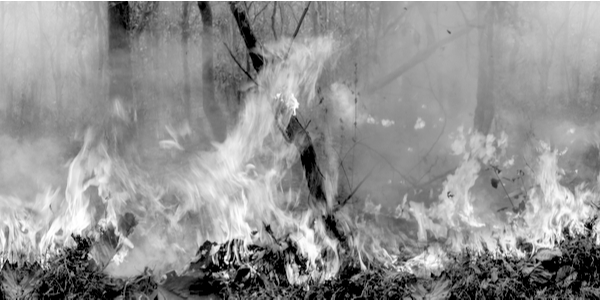Don't Blame King Coal for the Aussie Inferno

By Paul Homewood
January 8, 2020 - For decades, coal mining has been a cornerstone of the Australian economy: It is an industry worth $70 billion (£53.6 billion) that employs tens of thousands of people.
But as devastating bushfires – some of the worst in the country’s history – have destroyed large swathes of countryside and left at least 15 people dead, Australia’s coal industry has come under increasing scrutiny.

Experts say the severity of the fires is being exacerbated by climate change – a phenomenon which already disproportionately affects Australia. Coal is the most environmentally damaging fossil fuel, producing about a third more carbon dioxide than oil.
Nevertheless, Australia is the biggest net exporter of coal globally, accounting for almost a third of all shipments, and is the world’s fourth-largest producer.
It is deeply entrenched in Australian life. Every state produces coal in some form, providing jobs for 50,000 people and employing another 120,000 indirectly, according to the Minerals Council of Australia. More than $5billion (£2.6billion) in royalties is paid annually by miners to the federal government.
Between 2018 and 2019, Australia exported 210 million tonnes of thermal coal – used to fuel power stations – worth $26billion (£13.6billion), and 184 million tonnes of metallurgical coal – used for steelmaking – worth $44billion (£23billion). Most is exported to Asia, but some is used domestically to produce electricity.
… the report above is from The Telegraph, which goes on to tell how everyone from the Church of England to Norway’s government pension fund (funded by big oil, naturally) is busy divesting from coal miners.
The message is unmistakeable – Australians must immediately start pulling out of coal production if they don’t want to see their country burning up. And journalists, such as Ed Clowes who wrote the Telegraph piece, seem to be genuinely puzzled why Australians don’t see things in quite the same light.
I would have thought the answer to that last puzzle lies in the penultimate paragraph. The coal industry supports 170,000 jobs. Given that Australia’s population is about a third of the UK’s, that would be the equivalent of half a million jobs here. Would any government deliberately destroy that many jobs? And for what effect?
In reality, Australia only accounts for six per cent of the world’s coal production, which is dominated by China and India. Much of Australia’s coal is exported, about 85 per cent. If Australia stopped supplying to the likes of China and India, it is likely countries like Indonesia and South Africa would simply step in to make up the shortfall.
As far as emissions of carbon dioxide are concerned, Australia could shut down its coal industry tomorrow and it would not have the slightest effect on global temperatures, climate change or, above all, on wildfires.
So what about the fires? If Australia really wants to get the problem under control, it badly needs to get to grips with its fire hazard reduction management, things like clearing undergrowth and creating fire breaks.
There have been concerted attempts by environmentalists and others to deny this is a problem, for instance the Met Office’s Richard Betts, who would like you to believe climate change is the real problem.
However, the fire experts in Australia don’t agree with Mr Betts. The Royal Commission Black Saturday Report for instance, into the devastating bushfires of 2009 which killed 173 people, accused the Victorian state of a ‘minimalist approach to prescribed burning’, and warned that the state had ‘allowed the forests to continue accumulating excessive fuel loads’. The report called for a radical increase of prescribed burning.
However, as Jaime Jessop writes for Climate Scepticism, prescribed burning has remained at woefully low levels in both Victoria and NSW. Meanwhile there are instances of farmers being fined swingeing amounts for daring to construct fire breaks around their properties.
The reasons for this neglect of basic bush management are many – misguided green ideology, vested interests, political failure and mismanagement. But it’s far easier to blame climate change!
Has climate change played any role at all in the current batch of wildfires? Maybe, given the underlying warming of the Earth’s climate. But things are not quite as simple as that. First of all, we need to recognise that Australia has been much wetter since 1970 than before, notwithstanding the year just ended:
Secondly, the severity of the recent drought has been largely due to two natural meteorological factors:
1) The Indian Ocean Dipole, which has been much stronger than usual since last summer. When this happens, Australia gets bad droughts and India gets a good monsoon, which is exactly what has happened.
2) Antarctic Sudden Stratospheric Warming, which again brings reduced rainfall to Australia, particularly NSW.
Both phenomena are naturally reoccurring events, and have nothing to do with global warming. Indeed, the Australian Bureau of Meteorology has been aware of both of these factors for several months now, and warned about the likely severe droughts to follow.
Whatever the exact causes of the drought and fires, one thing is absolutely clear. Shutting down Australia’s coal industry won’t make the slightest difference. But proper bush management will. Even the Aborigines worked this one out hundreds of years ago.

